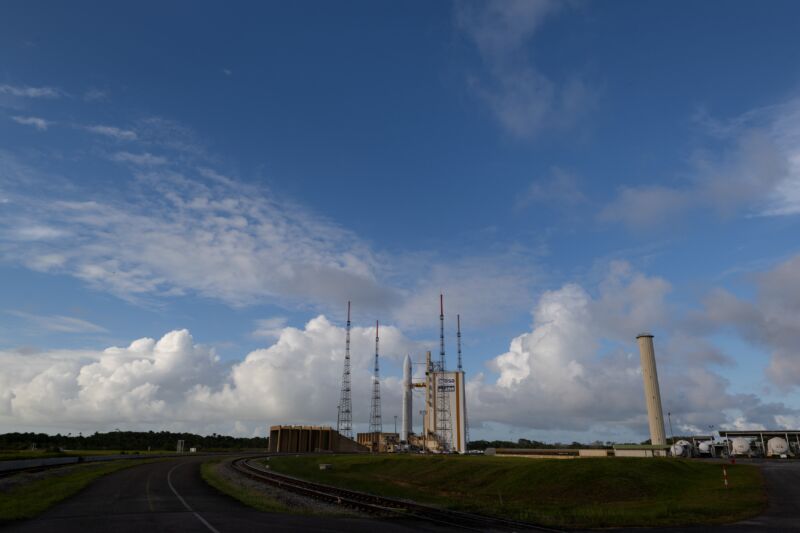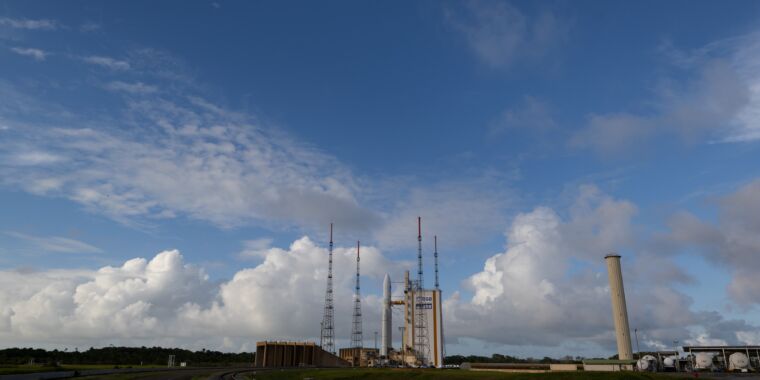
ESA
Thursday morning, the European Space Agency will launch a large probe to Jupiter to study some of the giant planet’s most intriguing moons.
With a mass of 6 tons, the Jupiter Ice Moons Explorer – or JUICE – is the largest deep space mission launched by the European Space Agency and one of the largest by any country to the outer planets. The spacecraft is scheduled to launch on an Ariane 5 rocket at 8:15 a.m. ET (12:15 UTC) from Kourou, French Guiana. It will be broadcast live on ESA Web TV.
The European Space Agency has previously conducted high-profile science missions, including the daring landing of the Rosetta spacecraft on a comet in 2014 that attracted global attention. Europa also built the Huygens lander that flew to Saturn aboard NASA’s Cassini spacecraft and then landed on the moon Titan.
But JUICE, which cost about $1.5 billion, is the first of the agency’s L-class missions, which are intended to be flagships for the space agency and will only fly about once every decade. Notably, the mission was selected by the European Space Agency in 2012, missing its original target launch date by just one year. The spacecraft was built by Airbus Defense & Space.
Europa decided to fly the mission after NASA’s Galileo and Cassini probes discovered that some of the moons around Jupiter and Saturn were covered in ice and likely harbored large, subsurface oceans where microbial life could exist.
“The next logical step was actually to go back to Jupiter with improved instruments to study the oceans in detail,” said Nicolas Altobelli, a planetary scientist at the European Space Agency involved in the JUICE mission. “And with this in mind, we wanted to see if these were possible habitats for life.”
Because the spacecraft is so massive, it will take several planetary flybys to build up the energy to reach the Jovian system. After launch, JUICE will fly by Earth three times, as well as Venus, before orbiting Jupiter in 2031. Then, from 2031 to 2034, it will make nearly three dozen flybys of Ganymede, Europa, and Callisto and explore their icy shells in greater detail.
JUICE descends to within 125 miles of some of these worlds, giving us by far our best view yet. Instruments include a high-resolution optical camera called Janus, a spectrometer, an ice-penetrating radar, a magnetometer, and more. If everything aboard the spacecraft works as designed, it should yield some dynamite science. And the mission has many scientific goals, including understanding the formation of Jupiter’s moons and how they changed to differ from each other.
The European spacecraft will also perform a complementary mission alongside NASA’s Europa Clipper vehicle, due for launch in 2024. They will carry several instruments and, combined, conduct a comprehensive survey of the habitability of the subsurface oceans of the outer planet worlds. Their results could point to a promising location to one day send a lander for further research and a possible search for life.
After many orbits around Jupiter, Juice is scheduled to enter orbit around Ganymede in late 2034, where it will remain for another year. This will be a delicate maneuver, as no spacecraft has ever entered orbit around a moon other than our own.
“This is definitely a first and it’s very complex navigation,” Altobelli said. “But Ganymede is a really interesting moon. It has its own magnetic field and we suspect, based on Galileo data, that it has an inland ocean. We hope to conduct the most detailed analysis of a moon’s interior ever is done. “

